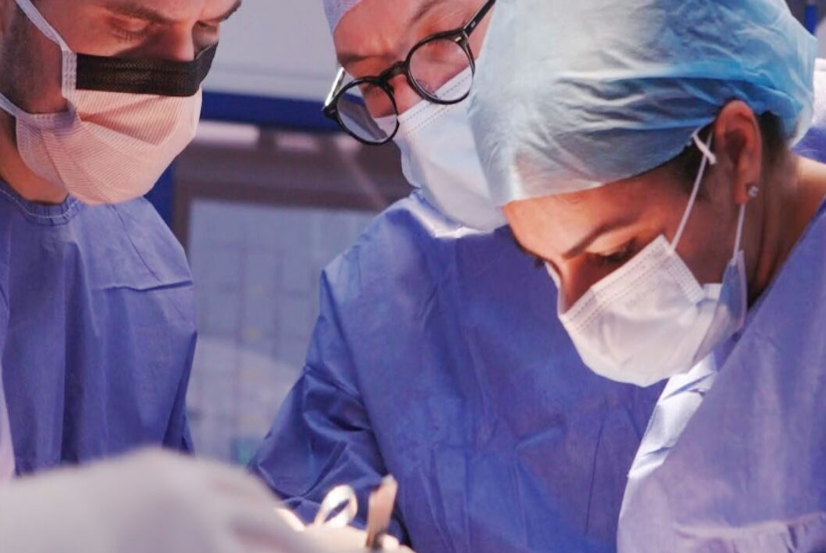Professor Usman Jaffer, Honorary Consultant Vascular surgeon at Imperial College London, welcomed us in his theatre for a day so we could watch-him operate. His work encompasses all forms of vascular surgery, from arterial to venous procedures. We wanted to learn how integral the Dopplex Doppler and probe were to various stages of Prof Jaffer’s patient care, including diagnosis, intraoperative monitoring, and postoperative assessments.
The first case was a common femoral endarterectomy. In vascular surgery, ensuring adequate blood flow through arteries and veins is crucial. The common femoral artery, located in the groin, supplies blood to the thigh and calf. When this artery becomes obstructed with calcified material known as atheroma, it impedes blood flow, risking tissue damage and other serious health issues.
Without precise and reliable tools to assess blood flow, surgeons face challenges in confirming the success of procedures like bypasses and endarterectomies. Inadequate blood flow can lead prolonged recovery times, and increased risk of complications.
The Dopplex single use intraoperative probe provides a non-invasive, accurate method for monitoring blood flow during and after vascular surgeries. Prof Usman Jaffer employs this device to ensure the technical soundness of his procedures. He describes,
“If we were doing an aneurysm, we would certainly use a Doppler to look at the signals in the outflow arteries to ensure that our bypass graft is working properly. Then we would check signals from the leg arteries at the ankle to ensure that the legs and the feet are perfused.”
During a common femoral endarterectomy, the Dopplex surgical probe detects triphasic signals, indicating healthy blood flow patterns. These signals are crucial for verifying that both inflow and outflow are adequate. Prof. Jaffar notes,
“We would always use visual as well as audible interpretation if that was available.”
In postoperative care, the probe continues to play an important role. Prof. Jaffar uses it during follow-up visits in the outpatient department. This consistent monitoring helps in early detection of any issues, ensuring timely interventions.
Before the advent of Doppler technology, Prof Jaffar explains that traditional methods of assessing blood flow required invasive procedures like injecting the vessel and taking x-ray pictures, which carried risks of complications. The Dopplex probe offers a noninvasive alternative, reducing these risks significantly.
The introduction of the single use, disposable probe by Huntleigh has further enhanced the reliability of the Doppler. Prof Jaffer believes that reusable probes often suffer from damage during re-sterilisation, leading to unreliable signals and increased cognitive burden on surgeons. The single use probe eliminates these issues, providing a consistent and reliable tool that boosts confidence in surgical outcomes. Prof. Jaffar emphasizes,
“Poor care costs a lot more than good care. So I think the importance is to be able to deliver good care as many times as possible, first time. And if that requires that you need a single use piece of equipment, I think that pays dividends multiple times in the medium long term.”
The Dopplex single use intraoperative probe has become a critical tool in Prof Usman Jaffer practice, making it “easier for you on your worst day”. Potential benefits for other medical specialties that require precise blood flow assessment and monitoring are to be explored.
Download the PDF
